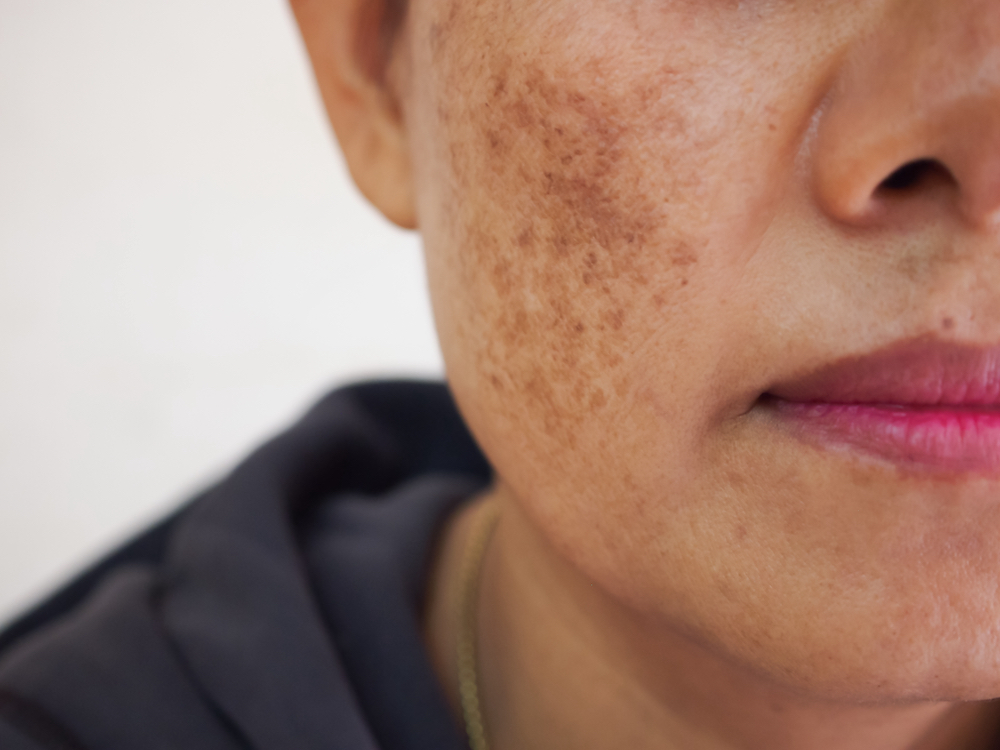Understanding Melasma and The Best Treatments

When skin pigmentation occurs, this skin condition is called melasma. More commonly experienced by women than men and darker skin patients than lighter skin, it often appears on the face as darker spots and patches. Melasma is not dangerous or contagious. However, if the discolorations cause someone to lead a low-quality life because they are embarrassed about their skin condition, this can cause psychological concerns. If your skin’s appearance is keeping you indoors or limiting your life, please get in touch with a local and reputable dermatologist in your area for a consultation visit.
Melasma is a Common Skin Disorder
Melasma affects up to 50% of women, and many experiences the onset of the condition during pregnancy. Although melasma signs may go away on their own, they may also worsen for high-risk groups. Melasma is called a “pregnancy mask” and that is because during pregnancy is when most women get the first signs. The hormone changes that come with pregnancy and birth control pills trigger skin pigmentation.
Sun Exposure Can Intensify Melasma Discoloration
Although this “pregnancy mask” is common in pregnant women, anyone can get melasma, and those with extended sun exposure can also have signs of melasma. It is always best to wear daily sunscreen, men, and women, due to the sun’s increasingly dangerous UV rays. Even if you do not lay out in the sun, per se, wearing sunscreen allows you to go about your day. Those with existing melasma should be cautious and never skip sunscreen in their skincare routine. Protecting the skin from further exposure can reduce the chances of the spots getting darker and more noticeable.
Although melasma is not preventable or curable, it is treatable. Melasma will affect some people based on skin color, skin type, hormones, and genetics, but sun exposure is a significant culprit. Avoiding sun during the peak hours, between 10 am and 4 pm, in addition to using sunscreen, can help protect the skin from flare-ups and help keep skin clear after seeking treatment. The biggest mistake would be to treat your melasma, re-expose your skin to the sun, and have those spots return at the risk of being more intense. Any reputable and experienced dermatologist treating melasma will warn against continued sun exposure. The good news is that melasma is treatable, so if your melasma is keeping you from living your best life, seek treatment from a professional today!
The Most Common Treatments for Melasma
Since melasma is skin discoloration, many treatments include skin-lightening agents that reduce the skin’s excess blood vessels and reduce pigment production and inflammation – all of which contribute to the visible signs of the skin condition. The largest group affected by melasma is pregnant women. Still, many of the topical treatments have ingredients that are not safe during pregnancy, which is why it is critical to work with a well-established and experienced melasma dermatologist if you are pregnant and want to address your melasma concerns. Knowing side effects and how long treatment can be used helps dermatology clients make educated decisions about what is best for their unique situation.
Covering Up Melasma with Tinted Sunscreens
One of the biggest challenges for melasma patients is finding a daily sunscreen that is easy to use and doesn’t feel thick and sticky. There are many sunscreen products available for all skin colors and types. There are tinted sunscreens with sun protection, and broad-spectrum versions are recommended for melasma patients. Some foundations offer protection from UVA and UVB rays, which can conceal the dark spots for daily wear. Melasma patients should remember that sun’s rays go through windows, so even if you are not outdoors, sun rays can come through car, home, and office windows. Those suffering from melasma are at high risk and should take measures to wear sunscreen and other sun protection gear.
Melasma treatments vary depending on the severity of the signs of melasma. Some patients may require multiple treatments or a combination that reduces inflammation and limits the skin’s pigment production. Other treatments that may also be part of the treatment plan promote skin regeneration, like retinoids.
Patients suffering from severe signs of melasma who want to take treatment a step further may choose chemical or acid peels – these should only be performed by a professional and licensed dermatologist. These treatments will remove layers of the existing skin, leaving skin highly susceptible to the sun’s dangerous UV rays.
If you feel like melasma is causing you to be self-conscious, limiting your ability to live your best life, consider visiting a professional dermatologist for a consultation. So many people are affected by this skin condition, which is treatable, so there is no reason to let melasma negatively affect your life. If you live in Atlanta, contact Buckhead Dermatology for an appointment. Let Dr. Sherrie Straughn, who specializes in melasma treatments, help you realize your skin’s optimal health and beauty.
